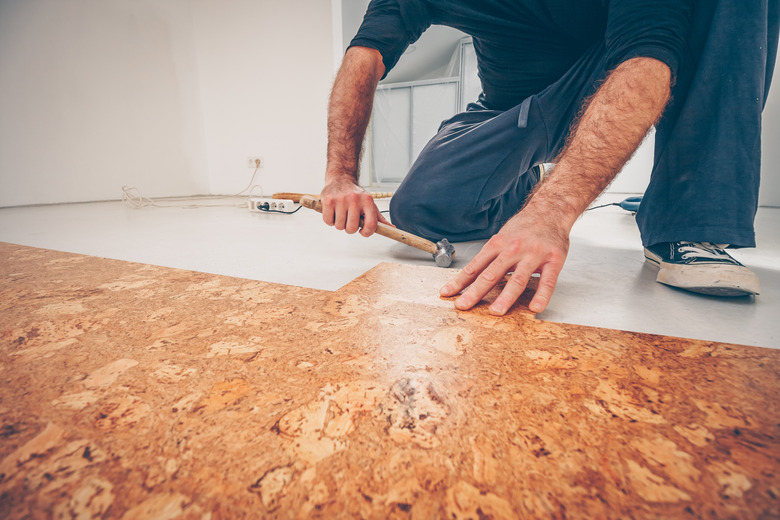Eco-Friendly Flooring: What You Need To Know
Deciding to install eco-friendly flooring is usually a pretty easy decision for most people. Who doesn't want to help the environment? But deciding on the actual flooring material can be tricky because many products that appear environmentally friendly on the surface have caveats when you look a little deeper. Flooring made from a renewable resource can promote sustainability, but if the product contributes to deforestation, its production can harm the environment.
What is Eco-Friendly Flooring?
What is Eco-Friendly Flooring?
No product is perfect, but environmentally friendly products will have some of the following characteristics:
- They come from a renewable resource.
- They contain some recycled material.
- They have a long life span.
- They can be recycled at the end of their service life,
- They do not contribute to indoor air pollution once installed.
Finally, many are certified by an organization that serves the various products that make up the flooring industry. While an industry organization may itself sponsor a certification program, the actual testing and certifying is usually carried out by a third-party group.
Here's a list of flooring products and how to distinguish the eco-friendly ones from those that are not so friendly.
Wood Flooring
Wood Flooring
As one of the most popular flooring materials, wood ticks a number of eco-friendly boxes. It comes from a renewable resource, a solid wood floor can last for decades, and the material can be recycled.
Most wood harvested in this country comes from responsibly managed tree farms. To make sure the solid wood product you are buying meets eco-friendly characteristics look for certification from FSC (Forest Stewardship Council) — which is an international organization that certifies responsibly harvested and milled lumber — or the National Wood Flooring Association's Responsible Procurement Program, which certifies the flooring comes from environmentally and socially responsible sources.
Engineered wood is a product that consists of thin plies of wood or MDF that are topped with a real wood veneer. The manufacturing process can introduce adhesives and sometimes formaldehyde, which can release volatile organic compounds (VOC) into the air once installed, contributing to indoor air pollution. When considering engineered wood building materials, look for products that produce low VOC levels, such as those with FloorScore or GreenGuard certification. Both certifications indicate that the product meets low-emission standards.
Reclaimed wood comes from buildings that are demolished. The wood can be turned into flooring. The FSC generally certifies all reclaimed and recycled wood products.
Bamboo and Cork Flooring
Bamboo and Cork Flooring
These products are often used as alternatives to more traditional wood flooring. Both come from renewable resources. Bamboo, which is really a type of grass, can regrow in a handful of years rather than the decades it takes a typical wood species to reach maturity. Cork is made from the bark of the cork tree. Once harvested, the cork regrows in a few years. The problem with both is the amount of energy required to transport them—bamboo from Asia and cork from the Medeterranian area—to the North America market.
Bamboo can come from over-harvested sources, so look for the FSC certification. For cork, choose low-VOC adhesives for glue-down installations.
Linoleum
Linoleum
People often use the term linoleum to mean any man-made tile product that is not ceramic or stone. But linoleum is a separate product that has been around since the mid-1800s. It's a natural product made from linseed oil, tree resins and limestone pressed onto a natural fiber backing. Designers like the color choice and the fact that the color goes all the way through the material, so scuffs and other damage are easy to repair.
Most linoleum is manufactured in Europe, so there is the cost associated with shipping to the U.S. Look for FloorScore certification that indicates the product does not contribute to indoor air pollution.
Rubber Flooring
Rubber Flooring
While used mainly in commercial buildings, some rubber flooring can be considered eco-friendly, especially products that make use of recycled tires. However, many products contain virgin rubber, which is a renewable resource, and synthetic rubber, which has a petrochemical base. Examine the product data sheets and choose products with a high recycled content, as well as FloorScore certification.
Stone, Ceramic and Glass Tiles
Stone, Ceramic and Glass Tiles
Natural stone and man-made tiles have been used as flooring for centuries. They last longer than most other types of flooring, and once in place there is no outgassing. Glass tiles often contain a high percentage of recycled material. Stone and ceramic tiles are made from plentiful, yet finite, resources that do not renew. Stone, ceramic and glass tiles can usually be recycled at the end of their service lives.
There is an energy cost associated with shipping these materials, especially when imported from another country. While the materials themselves do not contribute to indoor air pollution, the adhesives used during installation may, so use low-VOC adhesives.
Carpets and Rugs
Carpets and Rugs
Most carpeting, especially wall-to-wall carpets, and rugs consist of synthetic materials that are made with petroleum-based products, although some synthetic carpets contain a high percentage of recycled material.
Carpeting and rugs made from natural fibers like wool, cotton, and jute can be eco-friendly choices. The fibers come from renewable sources and the product can be recycled. Some natural fibers, such as wool, make tough, easy-to-clean rugs and carpets. But a wool rug often comes at a premium cost when compared to synthetics. Fibers like cotton and jute are best used in area rugs for low- to medium-traffic areas.
Unlike other flooring products, rugs are often used with other flooring materials, such as area rugs placed over wood or tile floors.
One potential problem with carpets and rugs is outgassing, not just from the fibers but from the backing, adhesives and padding, or cushion used under the carpet. Look for the Carpet and Rug Institute's Green Label Plus certification. It certifies that the components mentioned above emit the lowest levels of VOCs.



